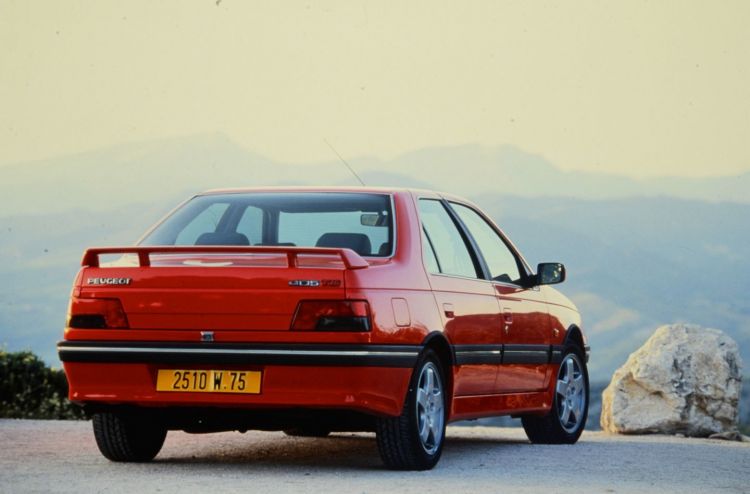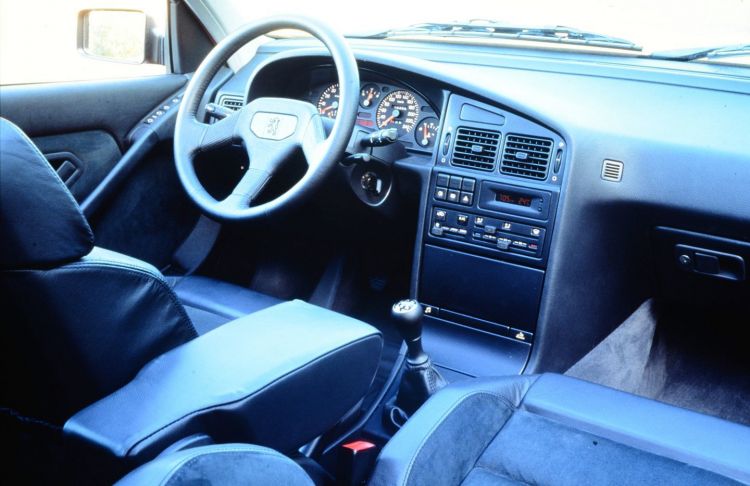The Peugeot 508 Peugeot Sport Engineered – abbreviated as 508 PSE – brand Peugeot’s return to the kingdom of sports sedans. A market niche that it abandoned in 1995, when production of the Peugeot Mi16 and T16 ceased. It’s been 25 years since Peugeot has been absent from the sports saloon market, focusing on compacts and sport utility vehicles. 2020 marks the return to high-flying sedans with a 360 hp plug-in hybrid. A formula whose success remains to be seen, for a car, which it will never be as special as the spectacular Peugeot 405 T16.
The history of the last great sports sedan from Peugeot, launched on the market in 1993, begins with the launch of the Peugeot 405 in 1987. And it begins with the creation of the herculean Peugeot 405 Turbo 16 by Peugeot Talbot Sport. The Peugeot racing team, led by Jean Todt, created a monster with coupé body and mid-rear engine designed for uphill competitions like Pikes Peak. It had all-wheel drive, 660 CV, and a technical base really similar to the Peugeot 205 Turbo 16 that had competed until 1986 in Group B.
The competition 405s were called Turbo 16, the street ones, for short, “T16”.
In addition to giving us such iconic shorts as Ari Vatanen’s “Climb Dance” – commemorating the record ascent of the year 1988 – this development also participated in two Paris-Dakar, winning the 1989 and 1990 editions. In fact, it was so successful that it formed the basis for the Citroën ZX Rally Raid, which would win the Dakar four times during the 1990s. What is this lesson in the history of French competition? To what Peugeot needed to homologate its competition 405 with a street carand the truth, they were frankly late.
But as the saying goes, better late than never. So neither short nor lazy, they launched a street Peugeot 405 T16 on the market, with which the brand’s participation in all competitions to date was approved. The soul of the Peugeot 405 T16 was its engine, known as XU10J4TE. Was a 2.0-litre 16-valve four-cylinder, supercharged by a variable geometry turbo. This engine developed 196 hp with the turbo blowing at 1.0 bar, but with its overboost function and a boost pressure of up to 1.3 bar, it reached the 220 hp.
With a top speed of 235 km/h, they were really fast sedans. Up there with the best of Germany.
Its torque went from 288 Nm to 318 Nm with the overboost activated – a function that lasted a maximum of 45 seconds – and 0 to 100 km/h was 7.0 seconds, according to the catalog. An impressive figure for the year 1993, when it was launched in T16, coinciding with the facelift of the Peugeot 405. However, many owners admitted that the car was even faster in reality. Many tuners took advantage of the solidity of the engine block, achieving powers of more than 350 CV without the need to reinforce the internal components of the engine.
For the rest, the other defining element of the Peugeot 405 T16 was its permanent all-wheel drive system. A system that used a central viscous coupling as a central differential, achieving a fixed 53/47 power split. Its gearbox was a five-speed manual box, equipped with a reinforced flywheel and a stronger clutch disc. And this is where the inconsistencies and exceptions in the information available about this Peugeot begin, always speaking at a technical level.
It was one of the first cars in history to use a variable geometry turbo, a Garrett VAT25.
There is evidence that some units mounted a self-leveling hydropneumatic rear axle – identical to the exotic Peugeot 405 Mi16x4 – and there is talk that some units mounted Torsen differentials on both axes. There’s also discrepancies in terms of engine power level. All this only increases the “legend” of this car, which is rumored to have been a kind of mobile laboratory for certain technologies, without much control over it from the directive. Only 1,061 units were built between 1993 and 1995.
Of this total – communicated by Peugeot, and inconsistent with other sources – it is known that 46 units were delivered to the French Gendarmerie. These units were intended for quick interventions and had much more basic equipment than the rest, with cloth seats and body kits identical to those of the rest of the 405 to go more unnoticed. Authentic sleepers, in short. Why the 405 T16, to trained eyes, were special cars. Its body kit designed by Pininfarina, its 16-inch wheels… it wasn’t exactly a 405 GL.
Weighing just 1,340 kilos and sporting suspension, it was an agile and fast car on twisty sections.
Its standard equipment was opulent, with electric sports seats, climate control, sports steering wheel and highly detailed instrumentation. It was, in short, the most that Peugeot could offer at the time, in a street car – in terms of sportiness. A very special car, a car unrepeatable, born from the technical need to standardize participation in competition of their “Zumosol cousins”. A car that has nothing to do with the Peugeot 508 PSE, which, no matter how good a car it is, will never become as special as its direct predecessor.




